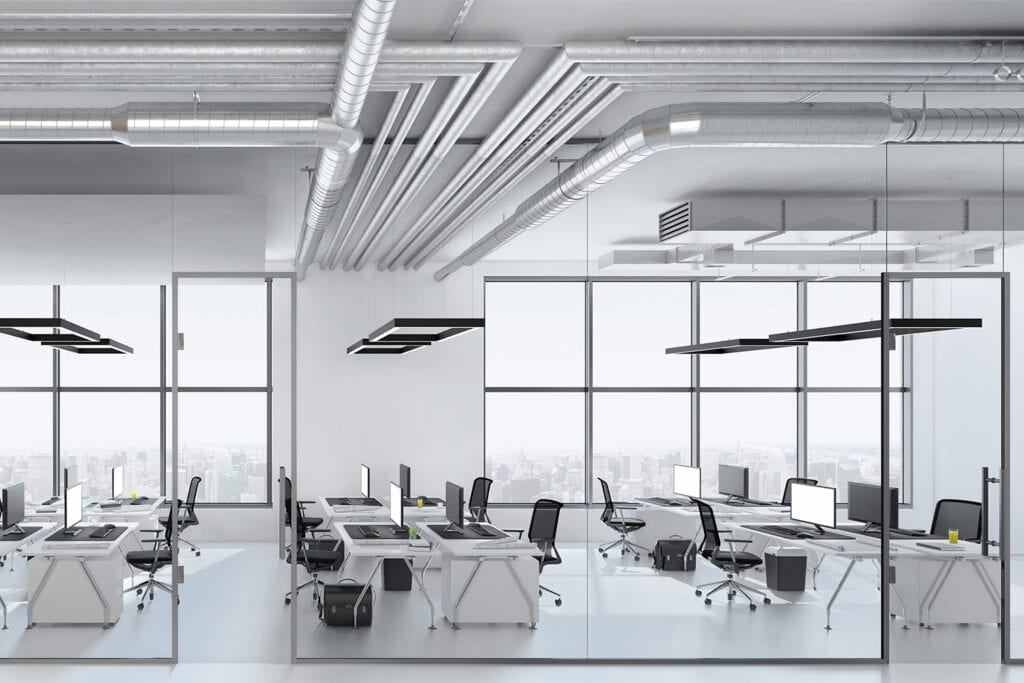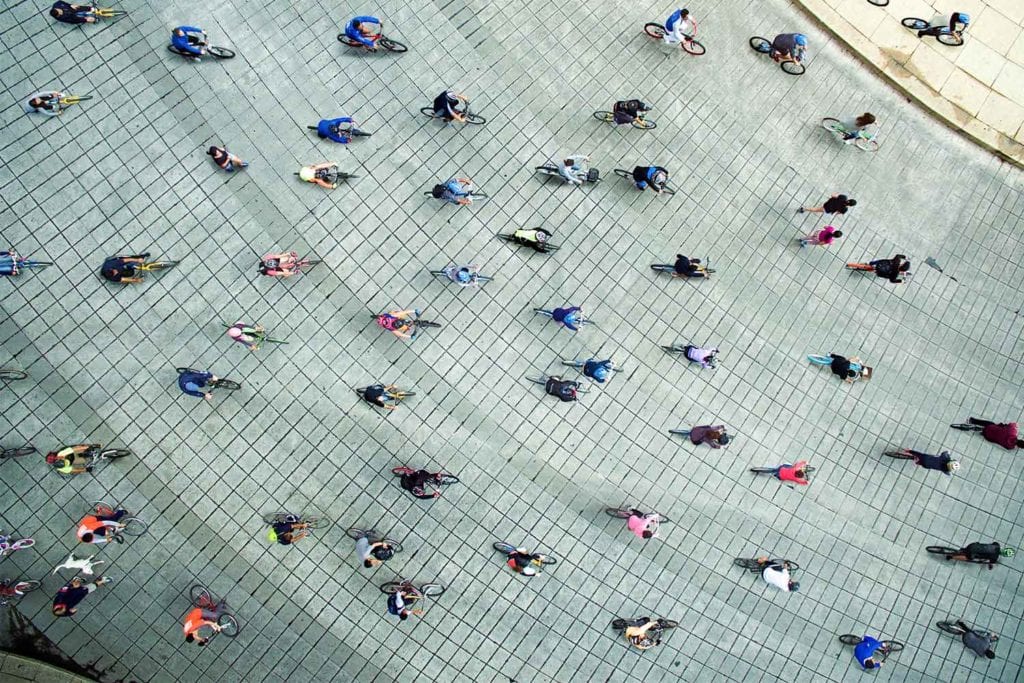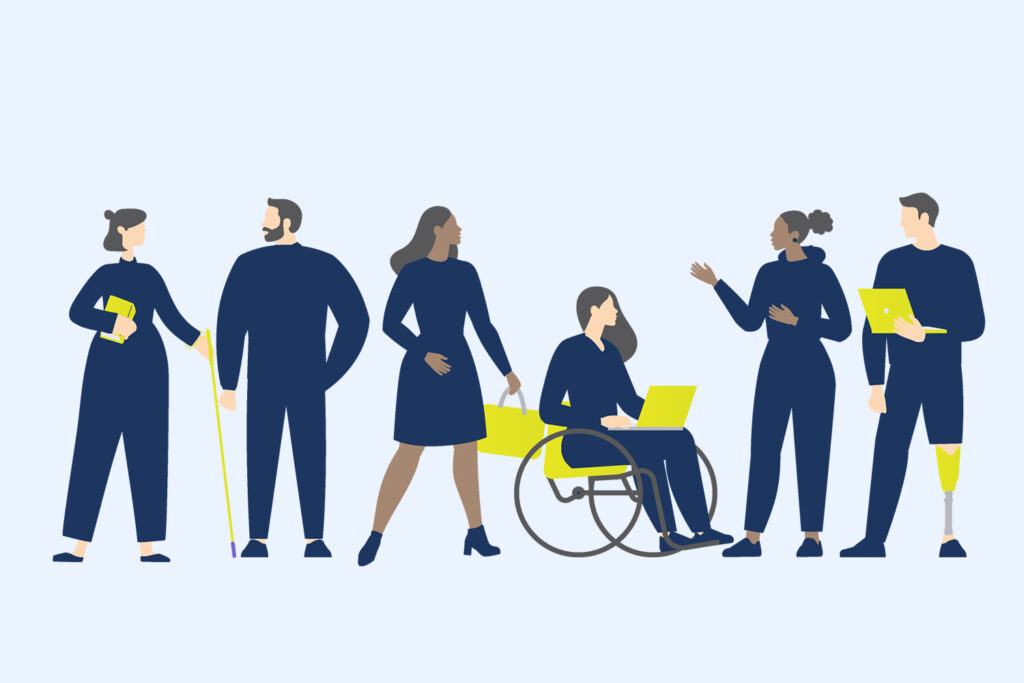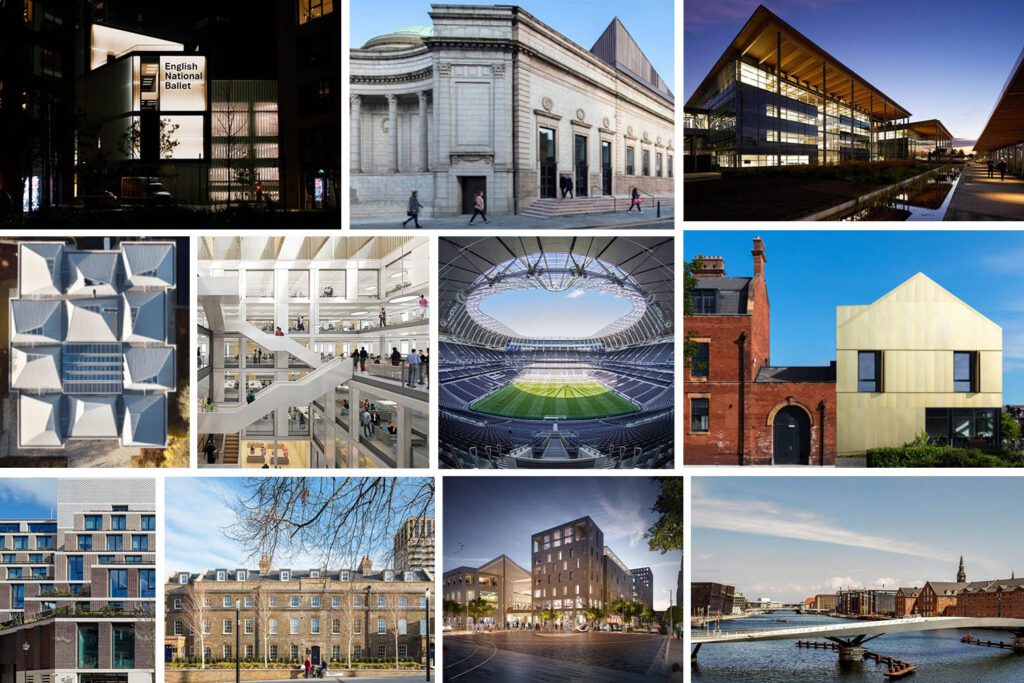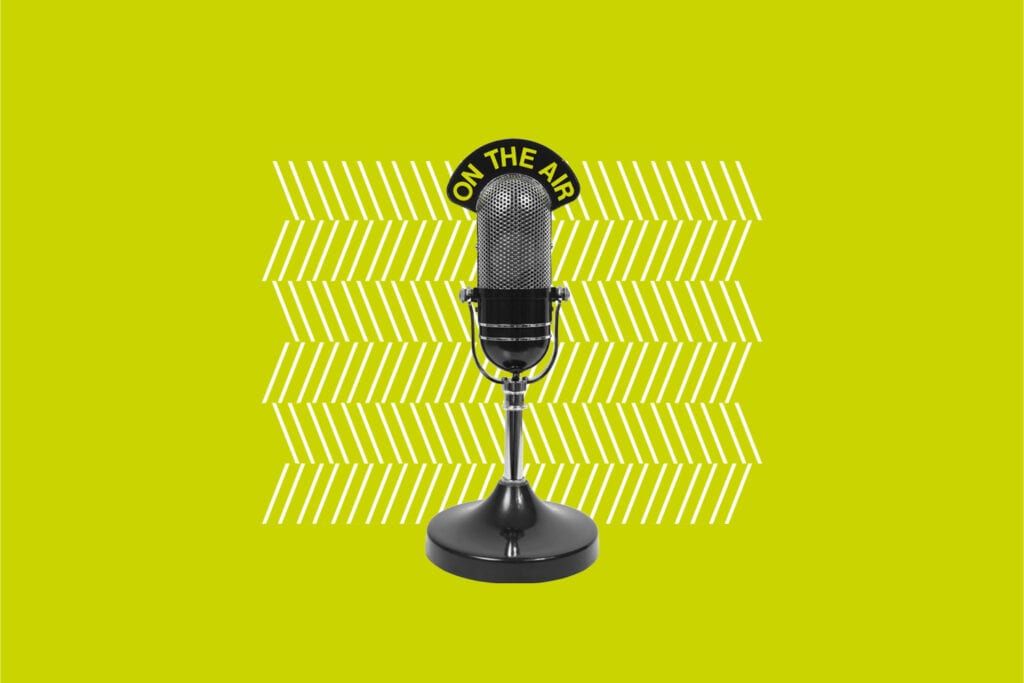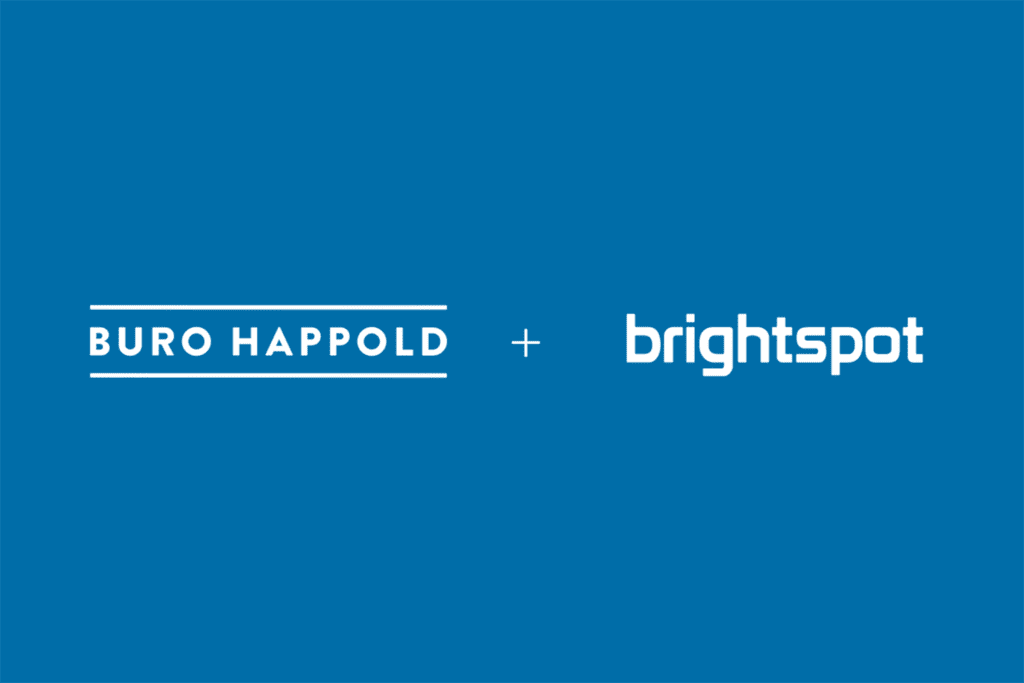Equality, diversity and inclusion in the “next normal”
Covid-19 has had a profound impact on society and drastically changed our lives. Some of these changes could permanently affect our workplaces. Here we examine our return to work from an inclusive perspective.

This analysis has been undertaken by Jean Hewitt who specialises in accessibility and inclusion in the built environment as part of Buro Happold’s inclusive design team. Jean is also a member of the BSI’s Advisory Group for safe working practices guidelines.
First, it is important to address the definition of vulnerability in this context. Some organisations seem to have assumed that all disabled people are vulnerable, which can lead to biased decisions being made about who is suitable for return to the workplace.
The disabled population, however, cannot be categorised as one. With Covid-19, a person with a hidden health condition – for example due to age, respiratory conditions or diabetes – is more likely to be at risk than someone with a visibly apparent disability, such as a wheelchair user. Vulnerability must be assessed on a case-by-case basis.
Additionally, there are indirect risks from measures taken to combat the pandemic – such as the negative effects of isolation on mental wellbeing – that must not be overlooked. There simply is no readily apparent sign or checklist of who might be vulnerable, so meaningful engagement with your building occupants is critical.
Built environment and inclusive practices during Covid-19 adjustments
Some of the safety measures implemented into public infrastructure can present a significant challenge to those with additional needs.
Public bodies are making alterations to enable distancing, such as pavement widening to accommodate more pedestrians. This may result in unintended shared space, which poses a risk to people who are blind or partially sighted.
Transport, too, must be appraised. For instance, prioritised parking and drop off zones for people with disabilities should be considered. There is much discussion around one-way routes to increase distance between pedestrians; it is vital that these routes can still accommodate wheelchair users, mobility aid users or people pushing prams.
There may be an increase in cyclist commuters, meaning that more cycle stands need to be added. Cycle stands must comply with guidance, such as ensuring that there is a detectable warning surface underfoot and some flexibility to accommodate adapted cycles, cargo bikes etc. Cyclists and pedestrians should still be segregated.
Regarding wayfinding and people movement, individuals may have used visual cues to familiarise themselves with routes. An altered environment could result in a reduction of familiarity and less independence in travel. For people who are blind or partially sighted, physical guiding might be required. This may also be the case for people with guide dogs, as the dogs must get to know a new route. As previously mentioned, one-way systems are being widely considered.
This could mean that routes are greatly extended, which introduces a new challenge for people with mobility impairments or conditions affecting stamina. Additionally, wheelchair users and people with walking aids may feel concerned about using public footways as it is more challenging to quickly move out of someone’s way if they are failing to observe distancing recommendations.

The role of technology
Technology can play a significant part in planning and supporting distancing measures.
For example, data analytics of people movement can enable assessments to be made about maximum occupancy levels for distancing rules.
Data analytics can also predict how a building or space might be populated and used, while tracking apps can be a highly responsive management tool in identifying issues. Such technology allows managers and operators to pre-test and react in an informed manner.
Apps can also be used to track building occupancy levels, movement and dwell times in certain areas, which in turn can inform decisions about use of one-way routes and assess the success of people movement intervention measures to maintain appropriate distancing.
Apps can be beneficial in helping people to navigate a building or environment. Wayfinding apps have been known to significantly increase independence for some people with disabilities; they can provide audio feedback to the visually impaired who are unable to see or interpret floor markers and directional signs.
Supporting these apps, digital signs in the form of tablets enable last-minute changes to be made more easily. It is possible to integrate this technology with audio and enlarged text options.
The importance of communication
Communication is vital in creating an inclusive and safe environment – clear signage and information benefits everyone.
Throughout the pandemic, many temporary measures have been put in place to enforce social distancing, signpost no-go areas and reinforce good hygiene practices.
It is important that temporary signage maintains a standard that is compliant with accessibility guidelines equal to that of permanent signage. This includes considerations such as keeping information clear, concise and consistent as well as using visual content to support text and provide alternative messaging formats.
Alternative formats include the use of tactile features, embossed text and Braille, pre-visit information and audio announcements. Where possible, adopting well-established symbols in universal use can be helpful.
Currently, the variety of signs, notices and the way that they are applied in the built environment is vast, which makes it more difficult than necessary to follow instructions. The result has been that many environments, without policing by management, are not being used correctly to minimise infection spread.
Many buildings may also introduce the requirement to wear face coverings, which presents a significant barrier for deaf people as the ability to lip read is eliminated. Perception of emotion through facial expressions in this context is also very challenging.
Reducing infection spread
The spread of germs is exacerbated by contact with frequently touched surfaces and objects, such as door handles.
There are a number of means to reduce the risk presented by door handles: doors that are automated or semi-automated; doors that are held open on an electromagnetic catch that releases in event of fire; and doors fitted with an adaptor to enable opening with the forearm.
The hands-free card reader is an existing feature that reduces the spread of Covid-19, as they eliminate the need for physical contact while providing access to people with varying reach abilities.
Disposable hand towels manufactured using recycled paper are quicker and more hygienic to use than hand driers, which can cause distress to many – such as those with autism – who experience sensory overload from noisy equipment or environments. Recycled paper towels are sustainable, and people tend to dry their hand thoroughly with them, which serves to prevent the spread of germs.
Many buildings have temporarily increased ventilation, either through air conditioning systems or by opening windows. As the autumn approaches, this may result in unwelcome cooler temperatures or fluctuations. It is important to inform regular building users of this change, as some medical conditions particularly affect body temperature.
While opening windows increases ventilation, in some cases the resulting noise levels will interfere with concentration or speech intelligibility. Ensuring that trickle ventilators and any mechanical ventilation filters are cleaned should enable air flow to be maximised without increasing the noise level.
Another challenge can be the installation of additional hard finishes – such as temporary glass or plexiglass screens and dividers – coupled with lower occupancy levels, which will change the acoustic environment in open plan. The resulting increase in reverberation time is likely to affect speech intelligibility, which will be an issue for people with hearing impairments and those with heightened sensitivity to background noise.
In situations where face coverings are used, the situation will be worsened by the impact of the face covering on voice clarity and projection coupled with the removal of the ability to lip read. Identifying quieter spots on the room booking system will help.
While light levels in offices are unlikely to be altered by any of the Covid-related interventions, reflectance from new separating screens may be an issue. This could affect people with sight conditions and heightened visual sensitivity through a neuro divergent condition, for example.
Lighting in open plan areas that relies on people movement detection for operation can be problematic in a sparsely populated office, particularly for anyone unable to vigorously move their arms to trigger the detector when the lights go out.
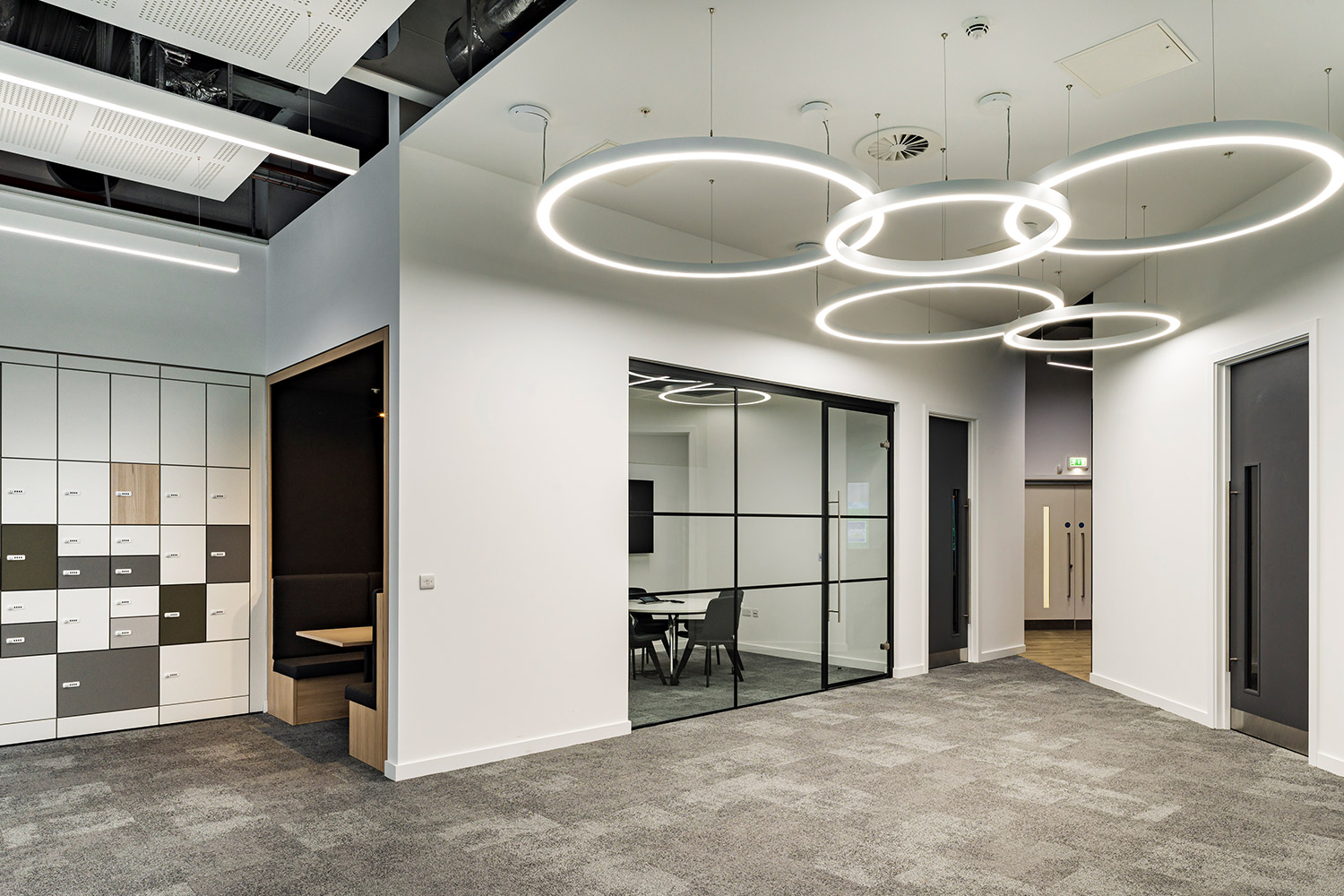
In the home setting, people with sight conditions are likely to have already adapted their environment to suit their needs. However, this may be for domestic activities rather than full-time working on a computer.
Homeworkers may benefit from good quality task lamps to supplement or replace the use of a domestic overhead fitting. Domestic level LEDs, for example, often have flicker that is not detectable by the naked eye but can contribute to headaches and eye strain; it is also readily picked up by the camera during computer video calls.
Controlling daylight and reflection can be another challenge, with increased need for anti-reflective coatings for computers or adding blinds to windows. However, most computer screens are provided with ever brighter displays to combat bright working environments and reflections. Accordingly, users should be reminded to take time to adjusting the display set up to find the right balance, which may vary through the day.
In terms of hygiene, installation of hand sanitiser dispensers must consider reach height abilities and dexterity of all potential users. Cleaning regimes must be strictly adhered to for handrails, grab rails, hoists and other support aids that building users may rely on to access facilities.
For safety in an emergency, suitable arrangements must be made – particularly for emergency evacuation of people with assisted or facilitated evacuation plans (PEEPS) – for situations where people need to leave the building quickly due to a fire, flood or other emergency. PEEPS established prior to the pandemic should be reviewed as these may need to be revised to reflect support needs and other changes to the building.
This is by no means an exhaustive list. Each change or decision made as a result of Covid-19 and beyond must follow careful consideration of how it may negatively affect building users, particularly those with a disability.
Anticipating the “next normal”
As society and workplaces reopen, we are mindful that the pandemic is far from over. We may even transition back into lockdown again, at least on a regional basis.
Many people have quickly adapted to remote working and virtual communications. It is predicted that organisations will feel able to offer enhanced flexibility and choice over where to work or study during and beyond the pandemic. This can be particularly helpful for people with disabilities, medical needs – including mental health conditions – or care responsibilities for other family members.
There has been a growing call for increased professional flexibility for many years. This unexpected mass experiment in prolonged homeworking has proved that many jobs can be undertaken perfectly well in a remote setting. This has given organisations the confidence to offer such arrangements – at least partially – as a matter of course.
With more regular homeworking being probable, many more offices may turn to hot desking for occasional use.
Desk booking then becomes important to ensure that people who rely on a specific desk position, layout or configuration will be confident of this being available; others who need a quieter place to work, such as many people with neurodivergent conditions, will ideally also be able to pre-book and feel assured that their choice will be available.
Increasing the proportion of sit-stand desks will help to make sure that most people can find a desk height that suits their needs.

Reports suggest that many people have post-infection respiratory issues, perhaps experiencing a physical impairment for the first time. Workplace and homeworking assessments and support will need to be in place to ensure that they are able to return to the workplace safely and comfortably while recovering.
Software has been used in new and developing ways, notably for video conferencing, that enables visual connection and interaction during lockdown. Lack of face-to-face contact can, however, result in feelings of isolation, particularly due to lack of non-verbal cues indicating wellbeing such as tone, facial expression and body language.
Some video platforms, such as Microsoft Teams, include accessibility features such as live subtitling and the ability to customise screen layout, including a way to fix the position on screen of a sign language interpreter.
Virtual events including CPD workshops, lectures, conferences and seminars have partially replaced those requiring physical presence. This yields some benefits, for example content can be recorded in an accessible format and viewed at a different time or revisited. When face-to-face events can occur once more, remote attendance could be a permanent option for anyone who experiences sensory overload from crowded, busy environments or finds travel difficult.
It is vital during this pandemic that we place people at the heart of this dynamic decision-making process. To be successful, consideration must be given to the diversity of human need. This encompasses disability, health, faith, gender and much more, including related family needs. Flexibility and some personal control are key to wellbeing, efficiency, productivity and motivation – offering as much choice as possible should create win-win arrangements that benefit both the individual and the organisation.
There is a unique opportunity to reconsider our workplaces as people gradually return to them. Engaging with stakeholder occupants is key.
This must include representatives with experience of disability, mental ill health and neurodivergent conditions as well as faith- or gender-related requirements from the built environment.
The result should be a happier and more inclusive workplace and a more resilient, flexible environment to meet the next normal, whatever that looks like.
